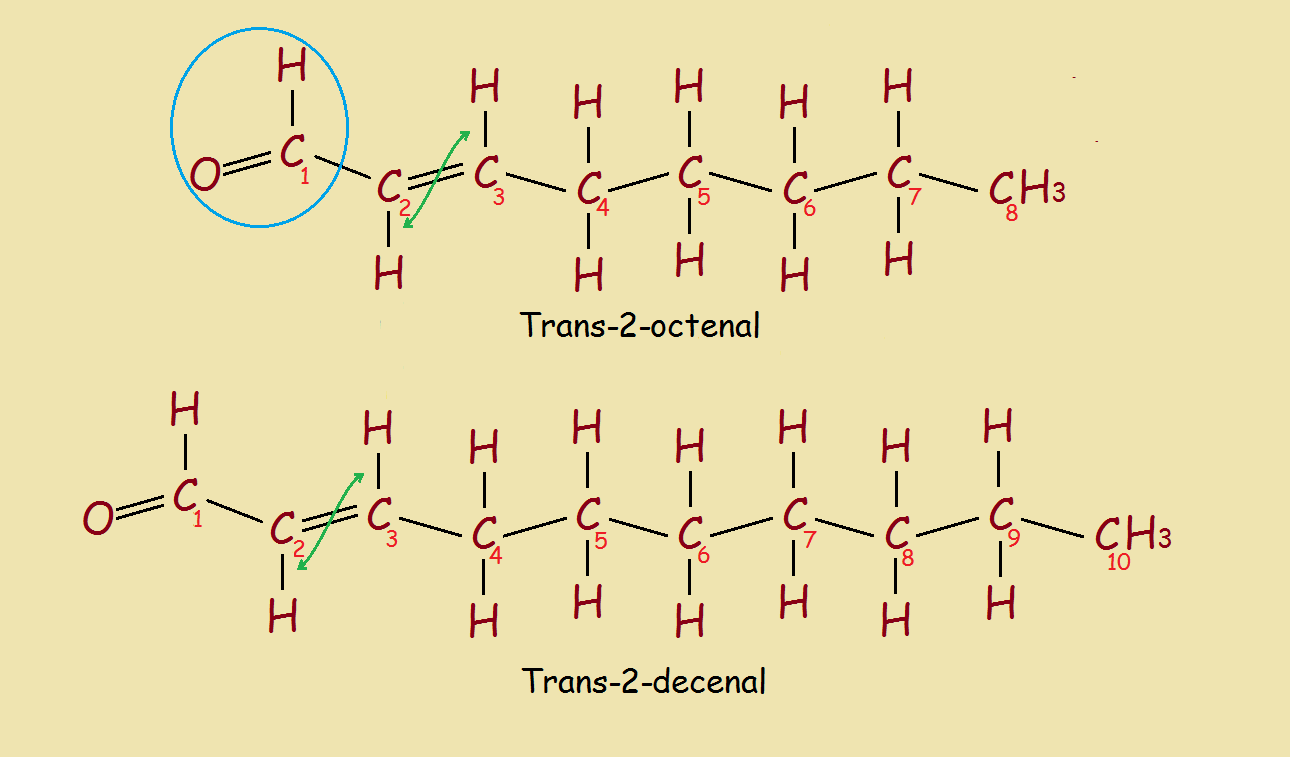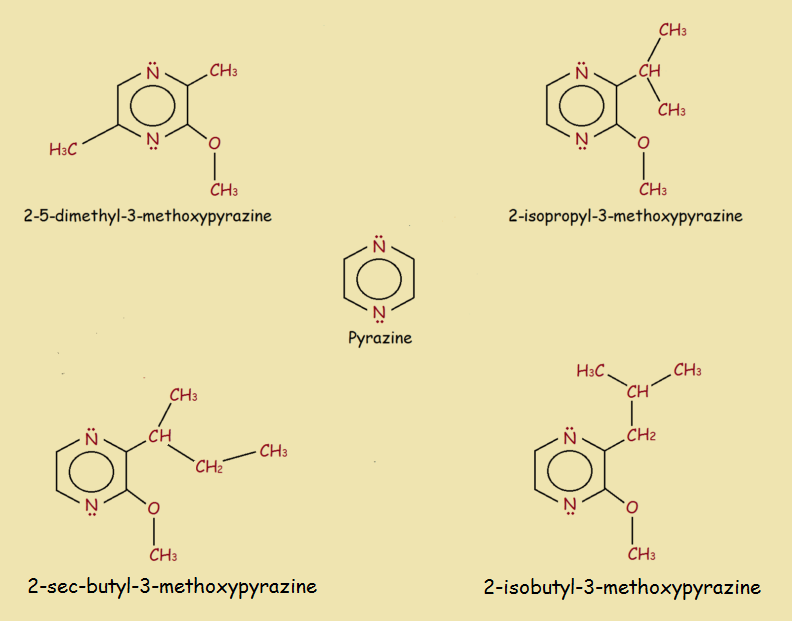 It was the ol’ one-two. First we were attacked by Asian Lady Bird Beetles, Harmonia axyridis, then the brown marmorated stink bug, Halyomorpha halys. The Lady Bird Beetles were detected first in Louisiana in 1988. Close on its heels, the Stink bugs were detected in Pennsylvania in 1996. Both exude horrible odors when provoked or crushed, though the constituent chemicals are entirely different.
It was the ol’ one-two. First we were attacked by Asian Lady Bird Beetles, Harmonia axyridis, then the brown marmorated stink bug, Halyomorpha halys. The Lady Bird Beetles were detected first in Louisiana in 1988. Close on its heels, the Stink bugs were detected in Pennsylvania in 1996. Both exude horrible odors when provoked or crushed, though the constituent chemicals are entirely different.
Stink Bug Chemistry
The stench of the Stink Bug is actually rather simple, as far as stenches go. Two organic compounds, each a “first cousin” of the other, are the culprits: trans-2-octenal and trans-2-decenal (see image).
These two compounds are classified as both aldehydes (-CHO) and alkenes (-C=C-). Let’s first examine how they are named. Notice both compounds have a straight chain or backbone of carbon atoms (C).
The name of the compound with eight carbon atoms is derived from the basic hydrocarbon octane. Oct for eight,8 right? Similarly, the compound with a backbone of ten carbon atoms has its name derived from decane. Dec for ten.2
So what’s the -2- and what’s the -en-? Also, what’s the -al? The -en- stands for the alkene or -C=C-. The 2 is the number of the carbon atom that is the lower of the two. Hence, it’s not trans-3-octenal or decenal.
The -al refers to the aldehyde group, which, since it is part of carbon number one needs no number in this instance. Lastly, what is the trans- part? This refers to the non-hydrogen atom attachments to the doubly bonded carbons. One is on one side of the double bond, one on the other. If they’d both been on the same side, the compound would have been the cis- rather than the trans- isomer.
Odor
Both alkenes and aldehydes have an unpleasant aroma. The two together are just plain bad.
But what about the chemistry behind Asian lady beetles?
Lady Beetle Chemistry

Recent research has shown there are at least four organic compounds responsible for the odor of these tiny pests. In comparison to the odor-causing chemicals of the stink bug, these “stinkers” are rather complex. However, they are all of a certain class of compound, the pyrazines (see the image).
Pyrazine resembles a benzene ring with two of the carbon atoms (at the 1 and 4 position) replaced by nitrogen atoms. Like benzene, pyrazine is aromatic. Nitrogen-containing organic compounds are often anything but perfume. And take note: each of the pyrazine derivatives contain an ether linkage (methoxy).
Besides bad smell, there are two problems associated with Lady Beetles secretion 1. they stain, 2. they are irritants.
Make Way
That’s right. It’s said problems come in threes. Well there’s a new pesky critter doing its best to establish itself! First appearing in the fall of 2014, the Spotted Lanternfly, with no known natural predator, is busy killing trees, grape vines, you name it. This China native appeared first in Pennsylvania. At least it offers good looks in place of a foul smell…
1 October, under the old calendar, was the 8th month of the year.
2 December, under the old calendar, was the 10th month of the year.
Note: You might also enjoy Eastern Tent Caterpillar Dissertation
References:
- NCBI: Alarm Odor Compounds of the Brown Marmorated Stink Bug Exhibit Antibacterial Activity
- Rutgers Cooperative Extension: Brown Marmorated Stink Bug – A New Exotic Insect in New Jersey
- University of Kentucky: Asian Lady Beetle Infestation of Structures
- Iowa State University: Why do Ladybugs Smell Bad? In-vivo Quantification of Odorous Insect Kairomones with SPME and Multidimensional GC-MS-Olfactometry
